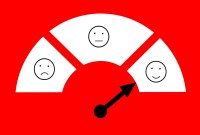- Home
- Business Processes
- Industry Knowledge
- Aerospace Industry
- Automotive Industry
- Banking Domain
- BFSI Industry
- Consumer/ FMCG Industry
- Chemicals Industry
- Engineering & Construction
- Energy Industry
- Education Domain
- Finance Domain
- Hospitality Domain
- Healthcare Industry
- Insurance Domain
- Retail Industry
- Travel and Tourism Domain
- Telecom Industry
- Leadership Skills
- eLearning
- Home
- Leadership
- Creativity Tools
- Benefits of Teams in Workplace
Benefits of Teams in Workplace
The use of formal work teams is commonplace in modern organizations. But why we have teams? What are the benefits or advantages that teams provide for organizations and employees? Do we really need to adopt formal team structures and use team-building approaches in organizations? Read this article to explore and learn the benefits of having formal teams in organizations.
There exist several organizational and individual benefits of using teams. These include increased workplace productivity; improvements to product/service quality; a reduced management structure; lower levels of absenteeism; reduced employee turnover; and increased industrial harmony, with all these benefits ultimately leading to improved workplace performance. It also enhances the quality of work-life (QWL) for employees and leads to increased work satisfaction. Teams are found in many workplace environments, including corporate, government, and education because they allow the organization to:
Organizational Benefits of Teams:
1. Workplace Productivity:
Having structured teams eliminate problems, waste and errors by removing variation in the work system by bringing individuals together to resolve work-system problems. The removal of variation in the work system produces a more productive system. Teams ensure that the work continues in the absence of a human ‘part’ by building ‘redundancy of parts’. This ensures that the system will not malfunction due to the absenteeism of any individual employee and will continue to perform without interruptions. Hence the organizations adopting team structures will have a higher level of labor productivity than firms that do not have these team structures.
2. Product/Service Quality:
As teams function to remove variation from a working system, resulting in the output being consistent and reliable. For example, in a production line work structure, employees focus on their individual ‘part’ in the system with quality generally inspected at the end of the production line. In the case of teams, a group of workers attends to whole tasks thereby ‘empowering’ such workers to take responsibility for their work and adjust work processes to improve the quality of their output. Hence the quality gets effectively ‘built-in’ to the process and therefore the organizations adopting team structure will gain higher levels of product/service quality than firms that do not have these team structures.
3. Lower Cost Management Structures:
By having teams, the responsibility for resolving work problems becomes collective and there is less need for external supervision. This reduced need for external supervision may result in a reduced number of levels in the hierarchy.
4. Lower Absenteeism:
Team structures provide an increased level of autonomy and responsibility and employees enjoying the social structure of teams are more likely to attend work. Thus, organizations with team structures will have lower absenteeism than firms that do not have these team structures.
5. Employee Turnover:
As with absenteeism, the social structure of teams is reported to positively impact employee turnover. If the quality of work-life is improved for employees when teams are present then a reduction in employee turnover is a likely outcome.
6. Industrial Harmony:
Teams actively encourage employees to present the results of problem analysis to management for approval regarding proposed solutions and this encourages improved labor-management interactions. Hence teams enable employees to have a closer working relationship with management which enables firms with these team structures to have a higher level of industrial harmony than firms that do not have these team structures.
7. Accomplish Big/Complicated Tasks:
Many organizational tasks and projects are too huge for an individual to do independently. Having team structures ensure that individual geniuses of the persons are collectively used and mammoth tasks are completed.
8. Brainstorm More Solution Options:
Different people looking at the same problem will find different solutions. A team can review ideas and put together a final solution that incorporates the best individual ideas. They can generate commitment for the final solution and work together to collectively pursue the same.
9. Review/Detect Flaws:
A team looking at different proposed solutions may also be in a better position to catch pitfalls that an individual might miss. This ensures that the final solution is much stronger and qualitative.
10. Build a Workplace Community:
Members of effective teams can form personal bonds which are good for individual and workplace morale. In the organizational setting, employees on teams may form bonds that extend beyond the work-place.
Individual Benefits of Teams:
1. Diversity:
Team structures provide exposure to different points of view. As the employees get exposed to methods and ideas that others have, they learn different ways of approaching a problem.
2. Enhanced Communication Skills:
Through teamwork training and practice, employees learn to actively and effectively listen to their team members to understand their viewpoints and concerns. A member needs to effectively articulate his ideas or your concerns to others to ensure they are taken care of or addressed. Members get genuine constructive feedback from each other and develop presentations, negotiating, and other related communication skills.
3. Critical Thinking and Evaluation Skills:
Team members must use these skills to evaluate the complex issues of team project goals and to formulate appropriate solutions and plans.
4. Conflict Resolution Skills:
Where there exists a diversity of ideas, there will naturally exist conflicts, but, with the right support and training in communication skills, team members can learn the skills to facilitate solutions to conflicts so that the team remains functional.
5. Higher Moral/Less Stress:
When things on the team are functioning well, it often results in higher morale and less stress at a personal level. Teams provide social support to team members and they can take help from each other in case of complex issues or other workplace-related problems.
Related Links
You May Also Like
-
Team Development by Building Trust
As your team begins to work together, you need to establish a way each team member can exchange ideas and build mutual trust. Successful groups are built on trust and collaboration. A free exchange of ideas, in an open environment, will allow your team to get to know each other and enable you to check on how they work together. Learn some tips to help build team trust and establish personal bonds.
-
Generating Ideas using Brainstorming
The brainstorming technique was developed by Alex F. Osborn in 1957 and brainstorming means where a team of members generates a large amount of alternative fruitful ideas on a specific problem without any criticism and then evaluates each idea in terms of their pros and cons. Brainstorming techniques fall into four broad categories: visioning, exploring, modifying, and experimenting.
-
Recognizing Stress & its Sources
As an individual, you almost certainly know what stress feels like. Stressors are events or situations to which people must adjust. Stressors may be physical or psychological in nature. The level of severity of stress is determined not merely by exposure but the intensity, duration, and frequency of stressors. The sources of stress are many. They arise from multiple areas both with the individual and from the environment.
-
A manager or an employee in an organization who is experiencing a high level of stress may develop high blood pressure, ulcers, irritability, difficulty in making routine decisions, loss of appetite, accident proneness, and the like. These can be subsumed under three general categories, physiological, psychological, and behavioral symptoms. Stress can give rise to a number of changes.
-
Collaborative leadership is all about collaborative problem-solving and decision-making or can also be defined as the leadership of a collaborative effort. . The term started to appear in the mid-1990s in response to the formation of long term public-private partnerships to rebuild public infrastructure. Learn how you can use principles of collaborative leadership to enhance your leadership skills for being an effective leader.
-
Many people think communication is easy. It is said that communication can never be a hundred percent complete. Many factors are involved in the process of communication and something can always go wrong with one or more of these. It becomes difficult and complex when we put barriers in communication. Recognize barriers to interpersonal communication and examine specific strategies for overcoming those barriers.
-
Laissez-faire is a style of leadership that affords the group members a great deal of independence. Tasks are delegated to the group members and they are responsible to see the project through to fruition. Research has shown that this style of leadership leads to the lowest levels of productivity. This article explains this style and covers the implications of having a hands-off approach and the situations where this style could be effective.
-
Evidence of the medically damaging symptoms of work stress necessitates applying the treatment of stress management. Stress management is increasingly drawing the attention to the management experts not only as a remedial measure but also as a way to resource management. If the workplace can be made a little more lovable the increase in the achievement of the organization may be much time more. If group stress can be removed by introducing group discussions and recreational facilities a long-lasting team spirit may get developed.
-
Charisma is a certain quality of an individual personality, by virtue of which he is set apart from ordinary men. Charismatic Leader gathers followers, through dint of personality and charm. Understand the meaning and concept of Charismatic Leadership and the qualities of a charismatic leader. Gain an understanding of the advantages and disadvantages of using charismatic leadership. Finally, explore the difference between charismatic and transformational leadership.
-
Concept & Definition of Stress
Stress is a popular expression used by people in day to day life. Pressures of day to day living sometimes necessitate coping or dealing with them and stretch the body beyond its natural capacity. They are called stressors. Stress is a natural, ongoing dynamic, and interactive process that takes place as people adjust to their environment.
Explore Our Free Training Articles or
Sign Up to Start With Our eLearning Courses

About Us
Learning
© 2023 TechnoFunc, All Rights Reserved










